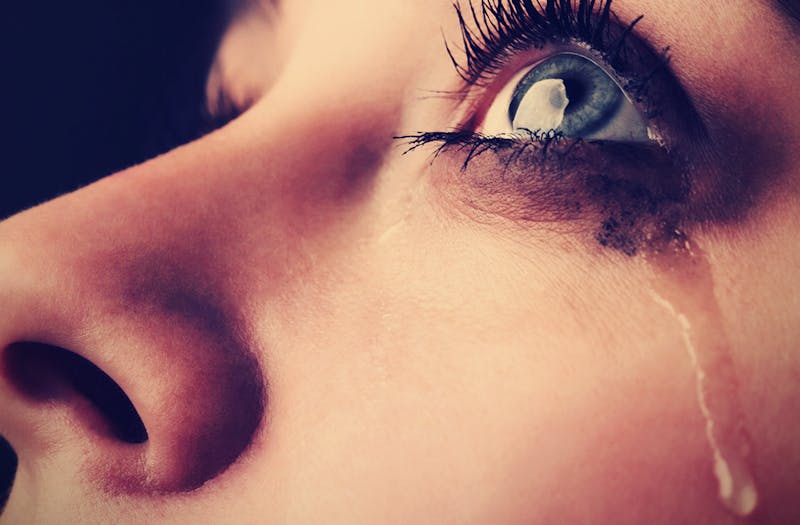
You have been crying since the day you were born and will do so for the rest of your life. Believe it or not humans produce 30 gallons of tears per year. Tears serve one primary purpose and that is to clean and lubricate the eyes. Tears are secreted from the lacrimal glands located at the back of the top eyelid. All tears contain water, lipids, lysozyme, lipocalin, glucose, and sodium. This protein-rich, antibacterial liquid goes from the outer edge of the eyeball toward the cornea and lubricates the entire eye surface every time we blink. Tears all overflow and roll down the sides of our cheeks the same way but there are three types. The composition differs drastically with each. Don’t cry about learning about tears…
Basal Tears
Basal tears are your basic functional tear. They are released continuously in tiny quantities to lubricate the cornea and keep it clear of dust. This is vital to ensure good visual acuity and comfort. Basal tears also fight against bacterial infection as a part of the immune system.
Reflex Tears
Reflex tears or irritant tears result from irritation of the eye by foreign particles, or from the presence of irritant substances such as vapors from chopping onions, or having any kind of perfume or fragrance, tear gas, or pepper spray in the eye’s environment. These tears can also occur with bright light and hot or peppery stimuli to the tongue and mouth. They are also linked with vomiting, coughing and yawning. Reflex tears are released in much larger amounts than basal tears. Basal and irritant tears have the same goal, to protect the eyes.
Emotional Tears
Emotional or psychic tears are referred to as crying or weeping. These tears are associated with all emotions. Often brought on by strong emotional stress, anger, suffering, mourning, or physical pain. They are not exclusive to negative emotions as people cry when extremely happy such as during times of intense humor and laughter. They contain stress hormones as a way of getting rid of them, which is a reason that a good cry is therapeutic when we’re under a lot of stress. Emotional tears are accompanied by reddening of the face and sobbing — cough-like, convulsive breathing, sometimes involving spasms of the whole upper body. Emotional tears are sent in to stabilize the mood as quickly as possible, along with physical reactions, such as increased heart rate and slower breathing.
Tears are an essential substance created by the body to ensure healthy eyes and vision. Tears can also serve other purposes such as reacting to external stimuli or in response to a certain emotional feeling. Each one of our tears carries the collective human experience. Starting with primal language as basic as hunger and as complex as a rite of passage or in moments as unrelenting as death.
Sometimes, our tear ducts don’t produce enough quantity and/or quality of tears to keep the surface of the eye adequately lubricated. This condition is known as “dry eye” and affects millions of adults in the United States. The risk of developing dry eye increases with advancing age. Women have a higher prevalence of dry eye compared with men. If you’re experiencing any issues with your tears or feel you may have dry eye, contact Kelly Vision Center for a free tear evaluation.
Next time you cry your eyes out, think about the different types of tears and what is really going on in your eyes. It might make that cry a little easier!


